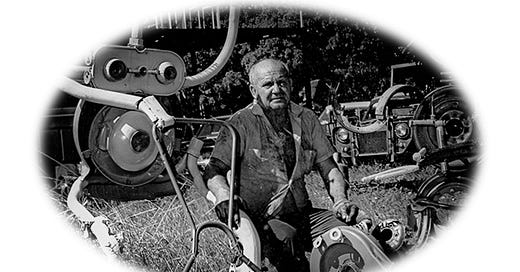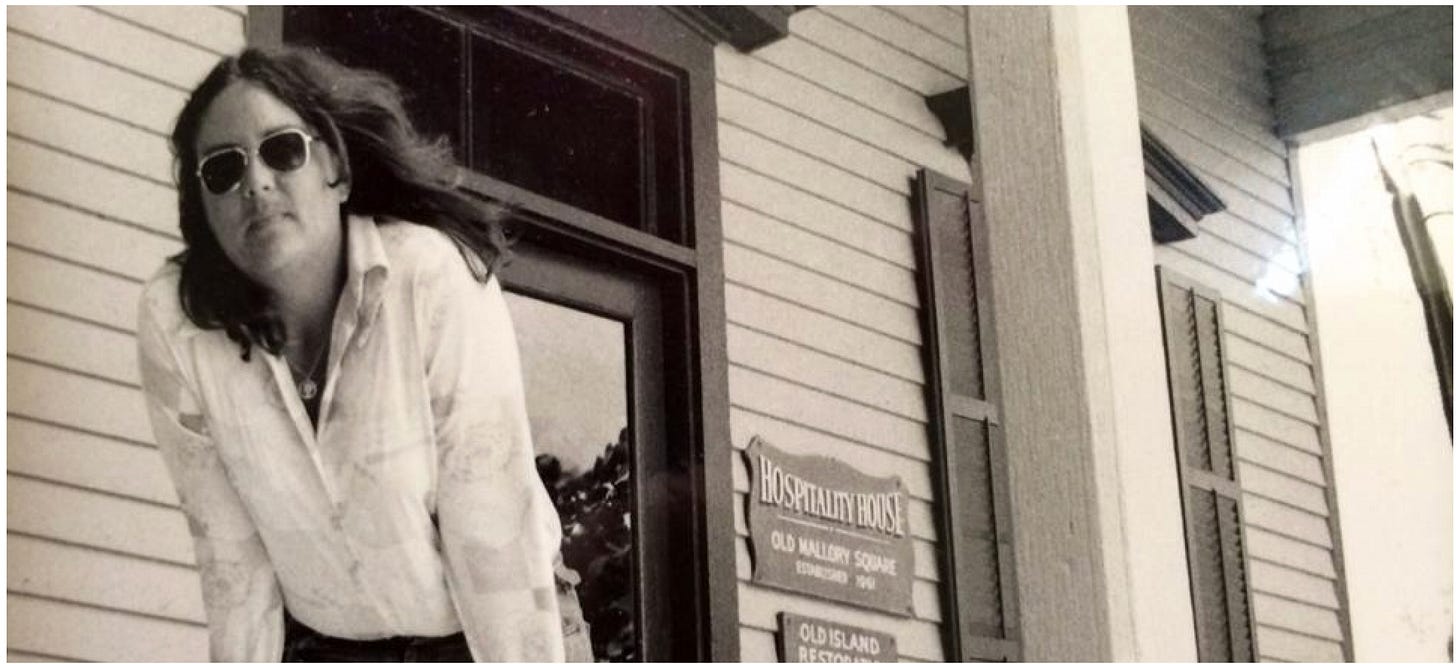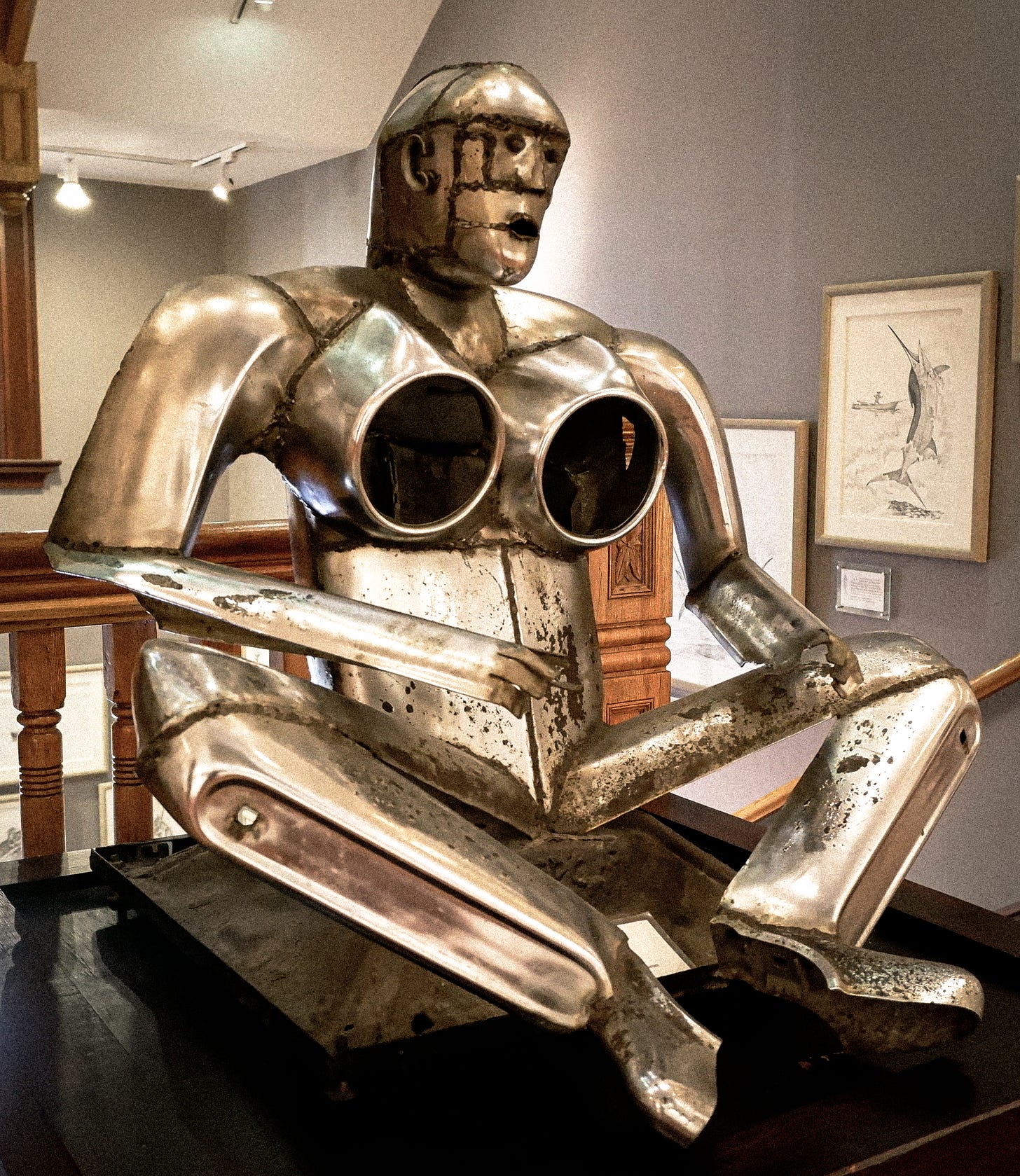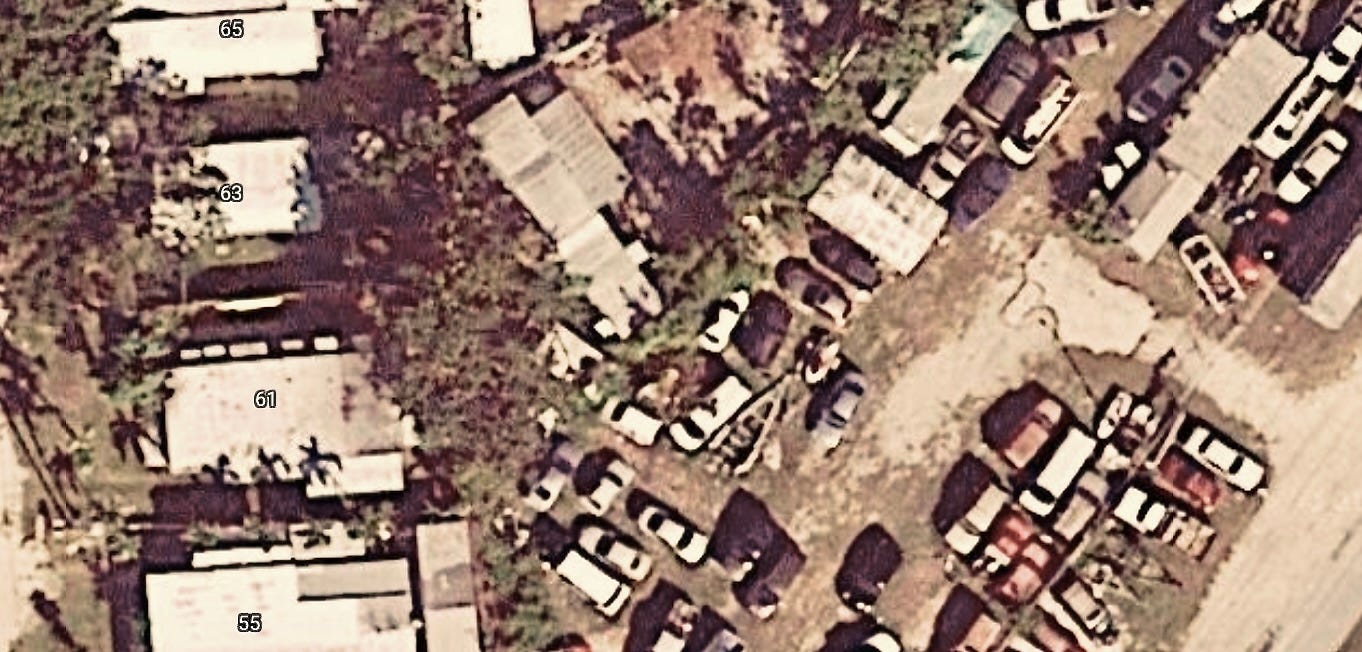Most of the pictures of Stanley Papio come from the time when he was fighting the power. He was in his 60s by then and still looks like a wrestler: big chest, square face on a thick neck, and eyes that dare you to mess with him. His chin pushes out at you, like his stare.
He was a feisty Polish kid in Canada, who got himself expelled from one school and jumped out the window of the next one. This led his parents to apprentice him to neighbors in the trades in the hope that something would stick, and that he would stick. Welding stuck. When Hitler invaded Poland, Papio enlisted in the army. He spent all of World War II welding and wasn't in a hurry to get back to it. He drifted around North America doing odd jobs. He wrestled and did some boxing, too; there was a pugnacious streak in him.
In 1949, a jockey friend brought him down to Miami as a groom, and from there he discovered the Florida Keys, which suited him because he liked being alone. Papio bought a lot at mile 101 on the Overseas Highway, a two-lane road on a long, skinny island where he set up as a welder.
Everybody who stopped by Stanley's Iron Shop he invited to bring back any metal items that they no longer wanted. Soon his lot filled up with dead appliances and outboard motors, car parts, rebar and tanks, and enough bedsprings to weld together into a fence that stretched around the whole place.
It was welder heaven. Papio was a guy with a world of materials and time on his hands, which he spent drinking Old Milwaukee beer and welding things together in ways that pleased him. It wasn't long before he began to attract attention.
The first thing that Stanley Papio got famous for, before his troubles with the law, was not wearing shoes. That stood out to people, a shoeless welder, sparks being part of the job. He figured his burned feet would heal up for free, whereas getting new shoes ran into money. This worked fine until he developed gangrene. "Buying new stuff is not a welder's way," he said many years later, when his work was in art catalogs but people were still asking him about shoes.
By the 1970s, Papio had neighbor problems. Ever since the movie Key Largo, developers had been busy bulldozing the mangroves for subdivisions, tourist attractions and motels. The town of Rock Harbor had even renamed itself Key Largo to fancy up the postmark. A junkyard wasn't anyone's idea of an attraction, and the local barons wanted the irascible Papio out.
He was arrested again and again for zoning violations – some of them made-up – and his pieces began to reflect how he felt about his persecutors: the greedy developers and "garden club ladies" who sicced the town on him. His whimsical sculptures took on a satirical edge that was often personal. Signage called out the "vultures, snakes and bats" that tormented him. One was "a worm and big-mouthed rat." There were no relationships in his life, but he was on good terms with the Sheriff; during one of his stints in jail he'd repaired the air conditioning unit.
Papio defended his chaotic mise en place by declaring that everything on the site was "a future work of art." And if people wanted an attraction, he'd give them one. He set his creations out on squares of astro-turf and colorful carpet remnants and rebranded the iron shop as Stanley's Museum of Folk Art, admission 25 cents. This put his enterprise a step ahead of the zoning laws and opened up a revenue stream besides. Now bus tours were stopping at the junkyard.
They didn't get Stanley Papio out of there until he died of a heart attack in 1982. By then he'd gained some recognition as an artist, but junk is junk. Stanley's museum was already being dismantled when a historian named Love Dean called Sharon Wells down in Key West to come up to mile 101 and have a look. Wells had seen the 'museum' signs, but figured it was just another South Florida oddity.
Sharon Wells is the person that people call when they want to know if something is worth saving. Her first job out of school was an architectural survey of Key West for the National Register of Historic Places. Wells spent four months documenting the island's 3,000 historic structures with photographs and histories. This was in 1976 and most of them looked like hell. After the survey gig was over she came back to Key West, this time as a staffer with the Historic Florida Keys Preservation Board, and spent the next 16 years working to save what could be saved from some of the same forces that Papio had been struggling with up at mile 101.
Sharon Wells in 1976
When Wells climbed out of her car on Key Largo, workers were carting things away, but a lot of what she saw made her think of Alexander Calder. She photographed what she could as fast as she could and rolled back down the Overseas Highway with the idea that Papio's work had to be saved. There was a brother who was willing to donate it, and the Key West Art and Historical Society had plenty of space in an old brick fort by the airport.
That was her pitch, but the board had some concerns. Most of what was on offer was old, weatherworn and falling apart – just like Key West in 1976 – and rusty. It looked like stuff people put out on the street, and had essentially been on the street for decades. But still ... Art.
Or close enough. The board agreed to accept the collection once Wells collected it. Many of the pieces were iron. They were heavy, there were more than a hundred of them and they were a mess. Wells wrote a flurry of grant proposals to fund art conservators, one of whom had worked on treasures at the Vatican. Now here she was, conserving Stanley's Museum of Folk Art, admission 25 cents. Not, perhaps, the top item on her CV, but things worth saving.
After the rescue, not much happened to the Papio collection for 33 years – as long as the artist had lived in Key Largo. Other priorities came and went at the Art and Historical Society until 2016 when curator Cori Convertito mounted a permanent exhibition at the Fort East Martello Museum, where the signature attraction is a haunted child-size doll named Robert.
Dr. Convertito is a fan of art bikes and helped to foster an annual parade of human-powered Papio-like kinetic sculptures up Duval Street. Most people still don't know the artist from Robert the Doll, but he's alive in a way that you can't be in a museum. Every Spring now brings us a new crop of crazy devices assembled from found objects by citizen artists. These creations are rigged with levers and gears so they rotate, oscillate, and reciprocate as they roll. Some are as gentle as inchworms and bunny rabbits. But others have an edge, and they let you know exactly how the artist feels about things.









Hi Don!
Can you send me your real email address to chris@brainsforrent.com?
Great read, Chris!! Nice to know some of the story behind the Papio Kinetic Bike Parade!